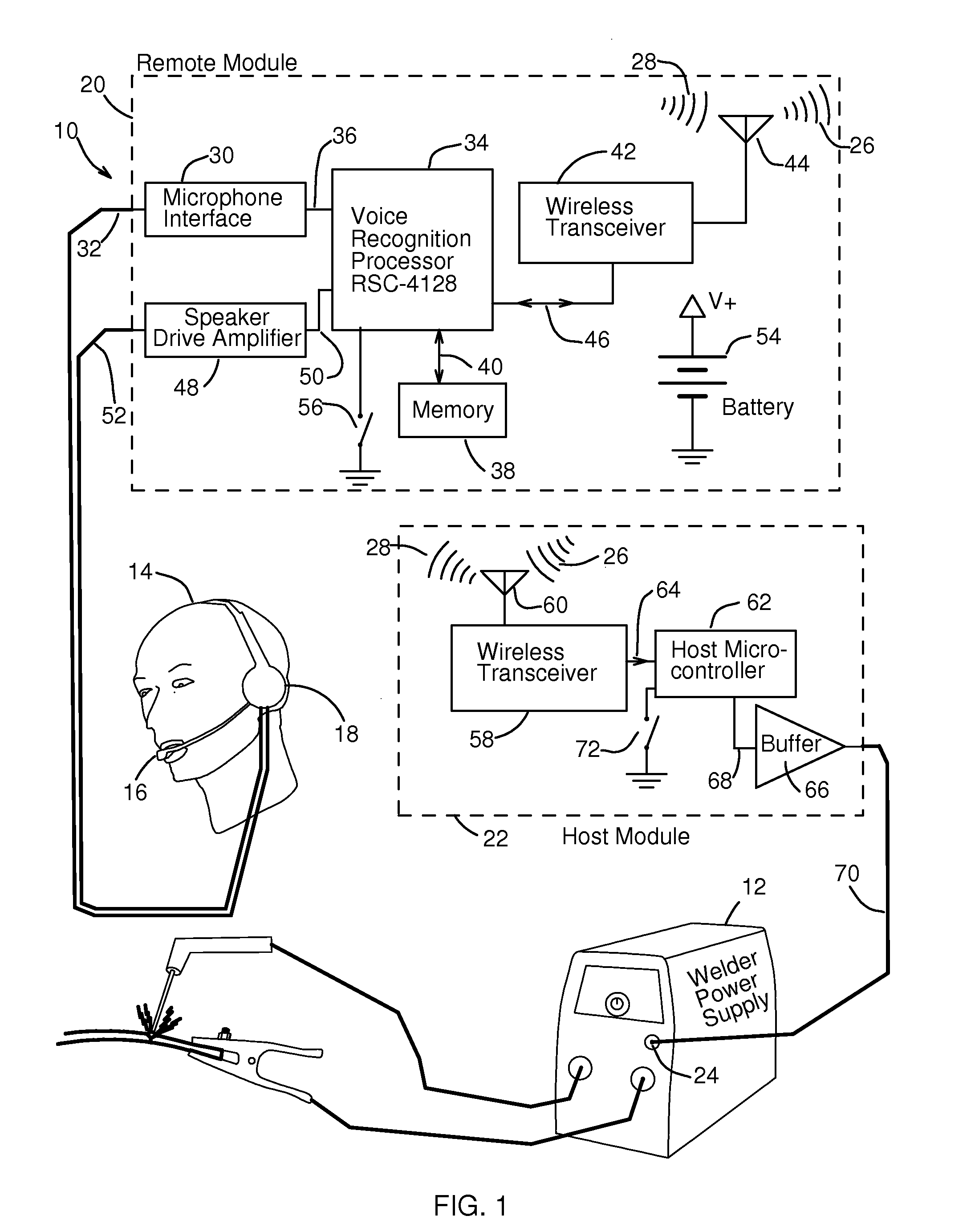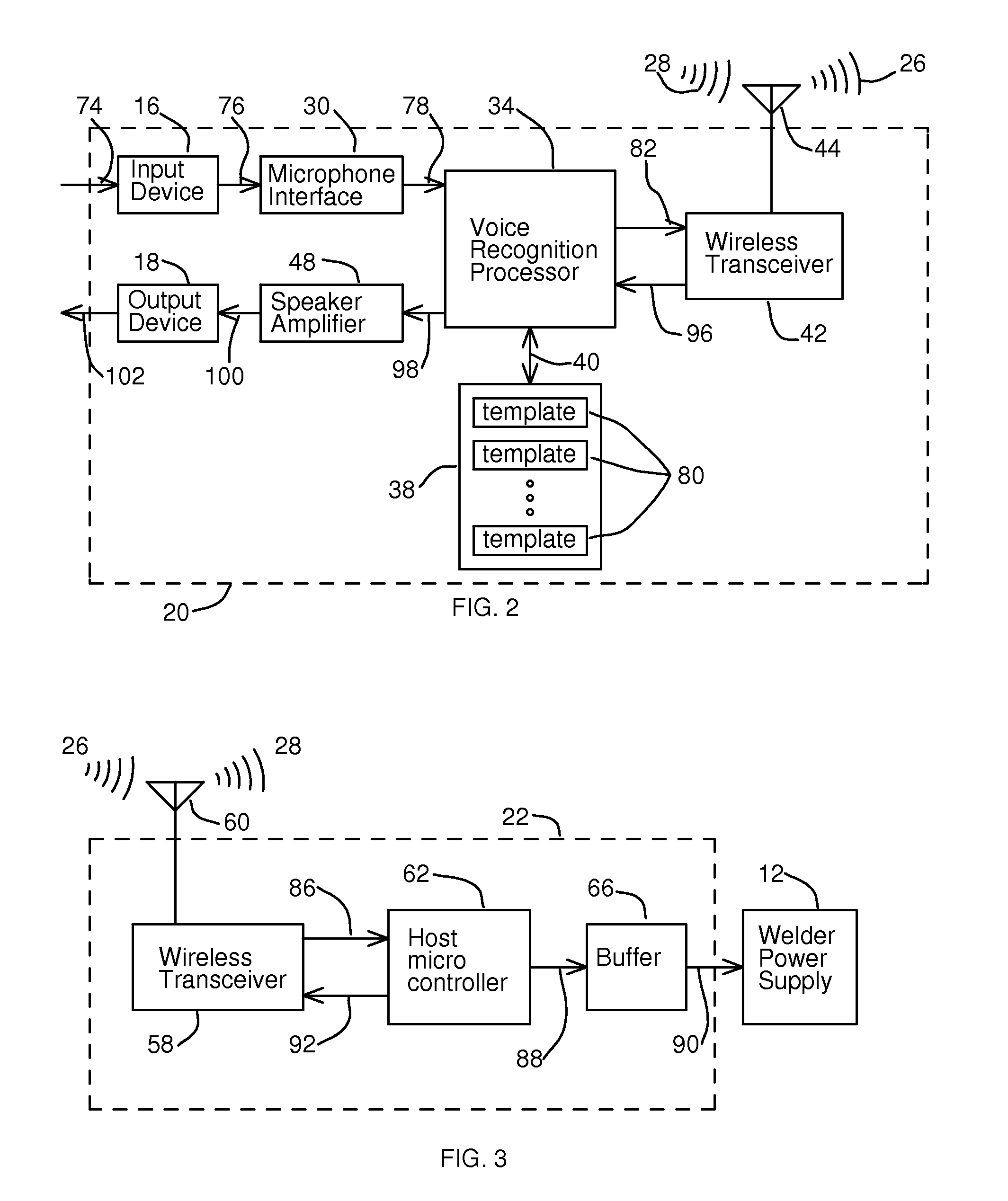Wireless voice recognition control system for controlling a welder power supply by voice commands
a control system and voice recognition technology, applied in speech analysis, speech recognition, instruments, etc., can solve the problems of small form factor control buttons and switches, damage to welding power sources, and difficulty in operating with heavily padded welder's gloves, etc., to increase the spoken sound signal to ambient noise ratio
- Summary
- Abstract
- Description
- Claims
- Application Information
AI Technical Summary
Benefits of technology
Problems solved by technology
Method used
Image
Examples
Embodiment Construction
[0047]In FIG. 1 there is diagrammatically shown a voice recognition control system 10 for the wireless control of a welder power supply 12 by voice commands spoken by an operator 14. System 10 provides an operator 14 with the hands free and wireless control of the welder power supply 12 permitting the operator to continuously focus on a welding operation. System 10 comprises an operator voice input device 16 and an operator audio output device 18, depicted here as a boom microphone and an over-ear headset, respectively. As it will later be discussed, the input device 16 and the output device 18 device may include several alternatives to microphone 16 and headset 18. System 10 further comprises a Remote module 20 carried by the operator 14, and a Host module 22 that is interfaced with a conventional remote control port 24 of the welder power supply 12. A welder power supply 12 may be, but is not limited to a Lincoln Ranger model 250GTX.
[0048]Broadly, the remote module 20 operates to ...
PUM
 Login to View More
Login to View More Abstract
Description
Claims
Application Information
 Login to View More
Login to View More - R&D
- Intellectual Property
- Life Sciences
- Materials
- Tech Scout
- Unparalleled Data Quality
- Higher Quality Content
- 60% Fewer Hallucinations
Browse by: Latest US Patents, China's latest patents, Technical Efficacy Thesaurus, Application Domain, Technology Topic, Popular Technical Reports.
© 2025 PatSnap. All rights reserved.Legal|Privacy policy|Modern Slavery Act Transparency Statement|Sitemap|About US| Contact US: help@patsnap.com



